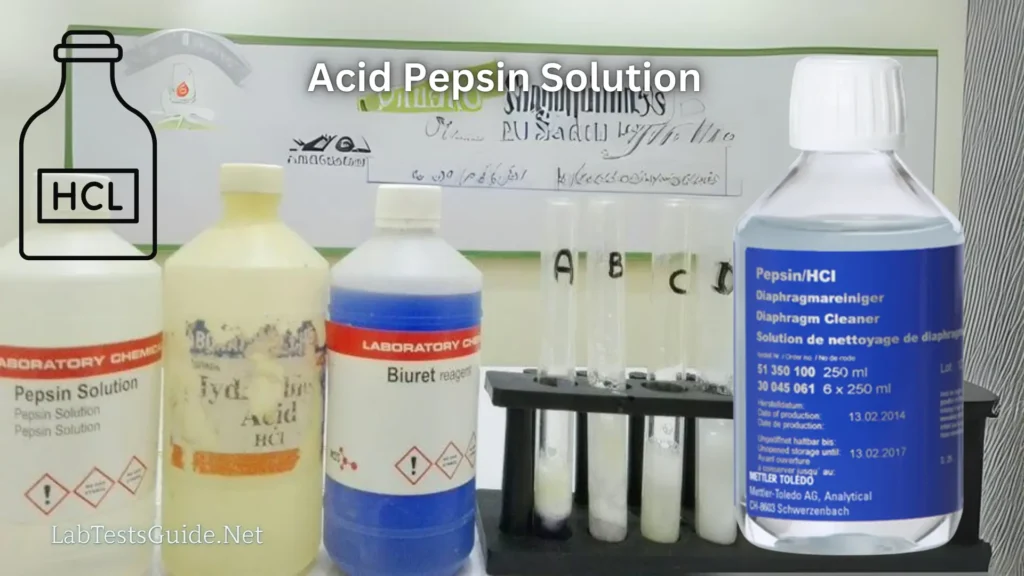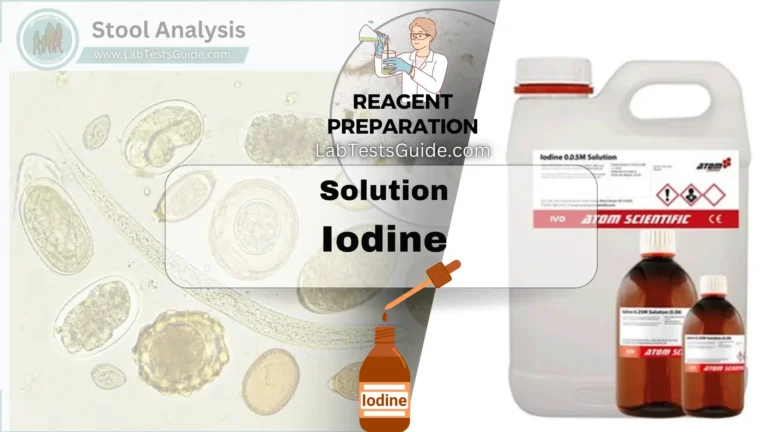Acid pepsin is used for proteolytic digestion of formalin-fixed, paraffin-embedded (FFPE) tissue sections prior to antibody application. In immunohistochemistry (IHC), the most commonly used fixatives, such as formalin, mask tissue antigens (cellular, membrane, and nuclear) by their intrinsic cross-linking. This masking results in poor or absent staining in IHC. Pepsin digestion of FFPE tissue sections improves antibody accessibility to tissue antigens.

Acid pepsin solution is used in clinical laboratories primarily for the digestion of proteins, which is essential in various diagnostic procedures.
Pepsin solution breaks protein cross-links and enhance immunohistochemical staining on formalin-fixed paraffin-embedded tissue
What is Pepsin ?
Pepsin is a digestive enzyme that breaks down proteins into smaller peptides. Here are key points about pepsin:
- Source: Pepsin is produced in the stomach lining and is secreted as pepsinogen, which is then activated to pepsin by the acidic environment of the stomach.
- Function: It facilitates protein digestion by cleaving peptide bonds, which helps in the breakdown of proteins into more manageable peptides and amino acids.
- Optimal Conditions: Pepsin operates best in an acidic environment with a pH of around 1.5 to 2.5, typical of the stomach.
- Uses: Apart from its role in digestion, pepsin is used in laboratory settings for protein digestion, tissue processing, and various research applications.
Uses of Acid Pepsin Solution:
- Histology: Prepares tissue samples for better staining.
- Gastric Analysis: Assesses stomach function.
- Protein Assays: Quantifies proteins by breaking them down.
- Clinical Research: Studies protein structure.
- Enzyme Activity: Measures pepsin activity.
Composition of Acid Pepsin Solution:
Here’s a table of the composition for preparing approximately 100 ml of Acid Pepsin Solution:
| Component | Volume/Amount |
|---|---|
| Pepsin | 0.5g (0.5% of Total Volume) |
| Hydrochloric Acid (HCL) Concentrated | 0.7ml (0.7% of Total Volume) |
| Distilled Water (H2O) | 100ml (99.8% of Total Volume) |
Preparation of Acid Pepsin Solution:
Preparation steps for Acid Pepsin Solution:
- Weigh and Transfer: Weigh 0.5 g of pepsin and transfer it to a 100 ml leakproof bottle.
- Dissolve Pepsin: Measure 100 ml of distilled water. Add half to the bottle and dissolve the pepsin. Add the remaining water.
- Add Hydrochloric Acid: Add 0.7 ml of concentrated hydrochloric acid to the bottle and mix well. (Caution: Handle hydrochloric acid with care in a well-ventilated area. Avoid mouth-pipetting.)
- Label and Store: Label the bottle and store at 2–8 °C. The solution remains stable for several months.
Precautions:
Here’s a list of precautions with brief descriptions:
- Handle Hydrochloric Acid Carefully: Wear PPE and work in a well-ventilated area. Avoid mouth-pipetting.
- Pepsin Handling: Avoid inhaling dust. Clean spills promptly.
- Storage: Store at 2–8 °C and label clearly.
- General Lab Safety: Dispose of waste properly and know emergency procedures.
Uses of Acid Pepsin Solution in Clinical Laboratories:
Here’s a concise list of uses for Acid Pepsin Solution in clinical laboratories:
- Histology: Prepares tissue samples for improved staining.
- Gastric Analysis: Evaluates stomach function.
- Protein Assays: Breaks down proteins for quantification.
- Clinical Research: Analyzes protein structure.
- Enzyme Activity: Measures pepsin enzyme activity.
Possible References Used







